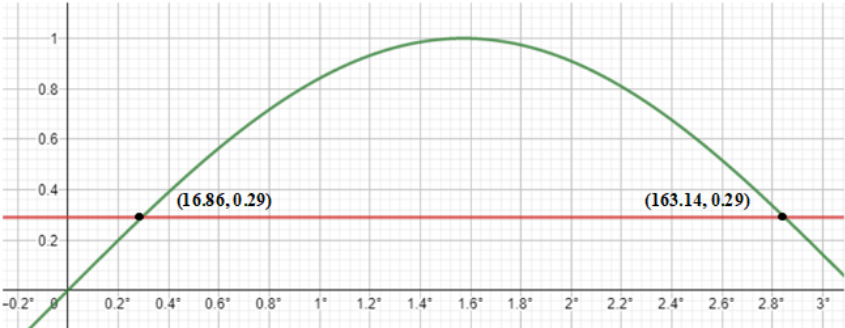Question
Question: How do you calculate the expression \(\sin x=0.29\)?...
How do you calculate the expression sinx=0.29?
Solution
We have been given the trigonometric function which is the sine function expressed equivalent to a constant term, 0.29. We know that the sine function is positive in the first as well as the second quadrant of the cartesian plane. Thus, x will have two values out of which one will lie between (0,90∘) and the other will lie between (90∘,180∘).
Complete step by step solution:
Given that sinx=0.29. We shall consider the values in the interval (0,180∘) only as the sine function is positive in the first and second quadrants only.
We know that sine function is an increasing function. It increases from 0 to 90∘ reaching a maximum value of 1 from 0 and decreases from 90∘ to 180∘ reaching 0 from the maximum value of 1.
Now, we shall take the inverse of the given trigonometric function.
⇒x=sin−1(0.29)
Using trigonometric calculations, we get the value of x as:
⇒x≈16.858∘
Since the sine function is a symmetric function with respect to the x-axis, thus due to symmetry the other value of x will be given as
⇒x=180∘−16.858∘
⇒x≈163.142∘
Therefore, for sinx=0.29, x=16.86∘ and 163.14∘.
Note: Another method of solving this problem was by plotting the graph of sine function and the graph of straight-line y=0.29 parallel to the x-axis on the same cartesian plane and then marking the points of intersections of these two graphs. The x-coordinate of the points of intersections would give us the solutions of the given expression.

